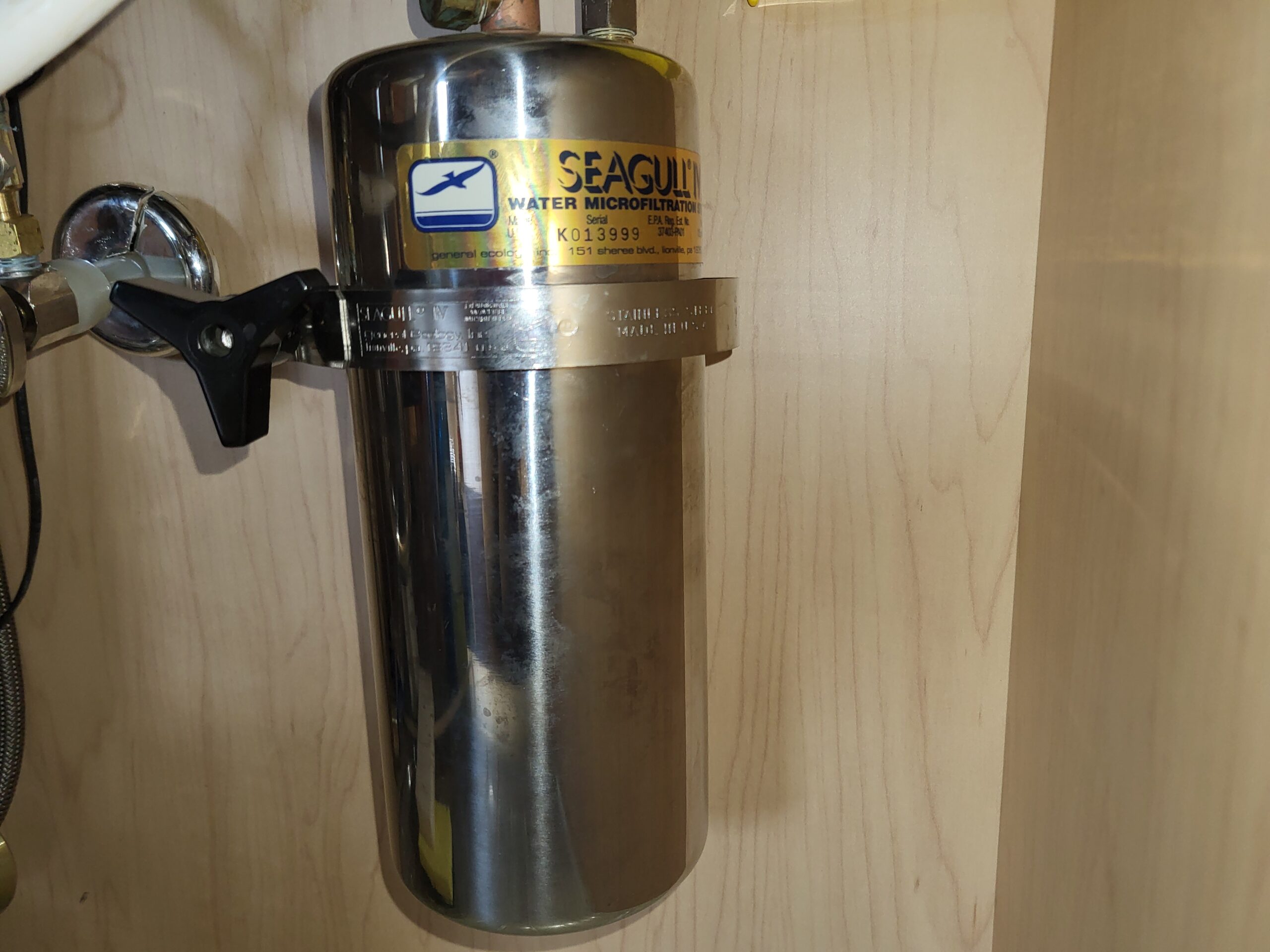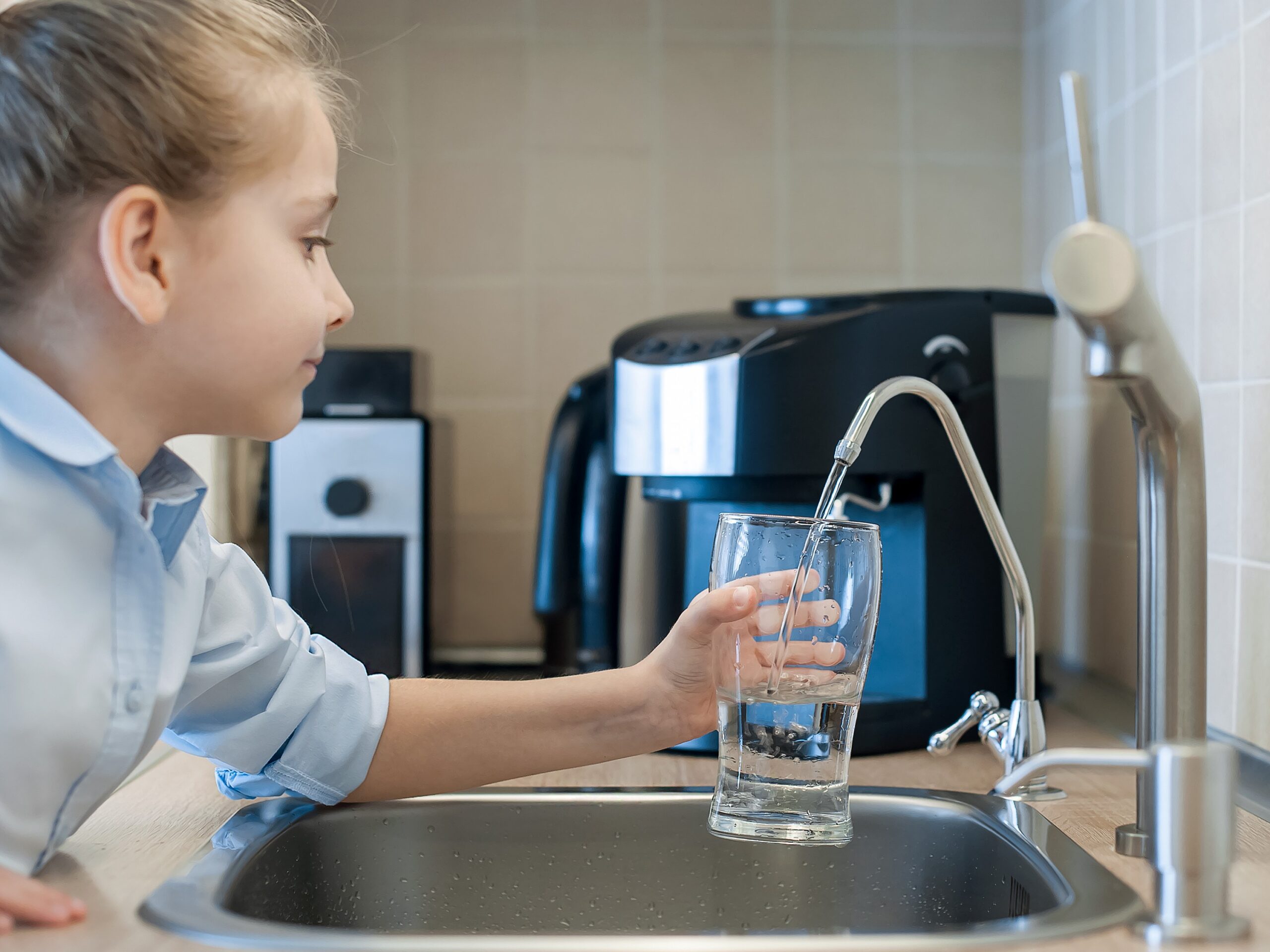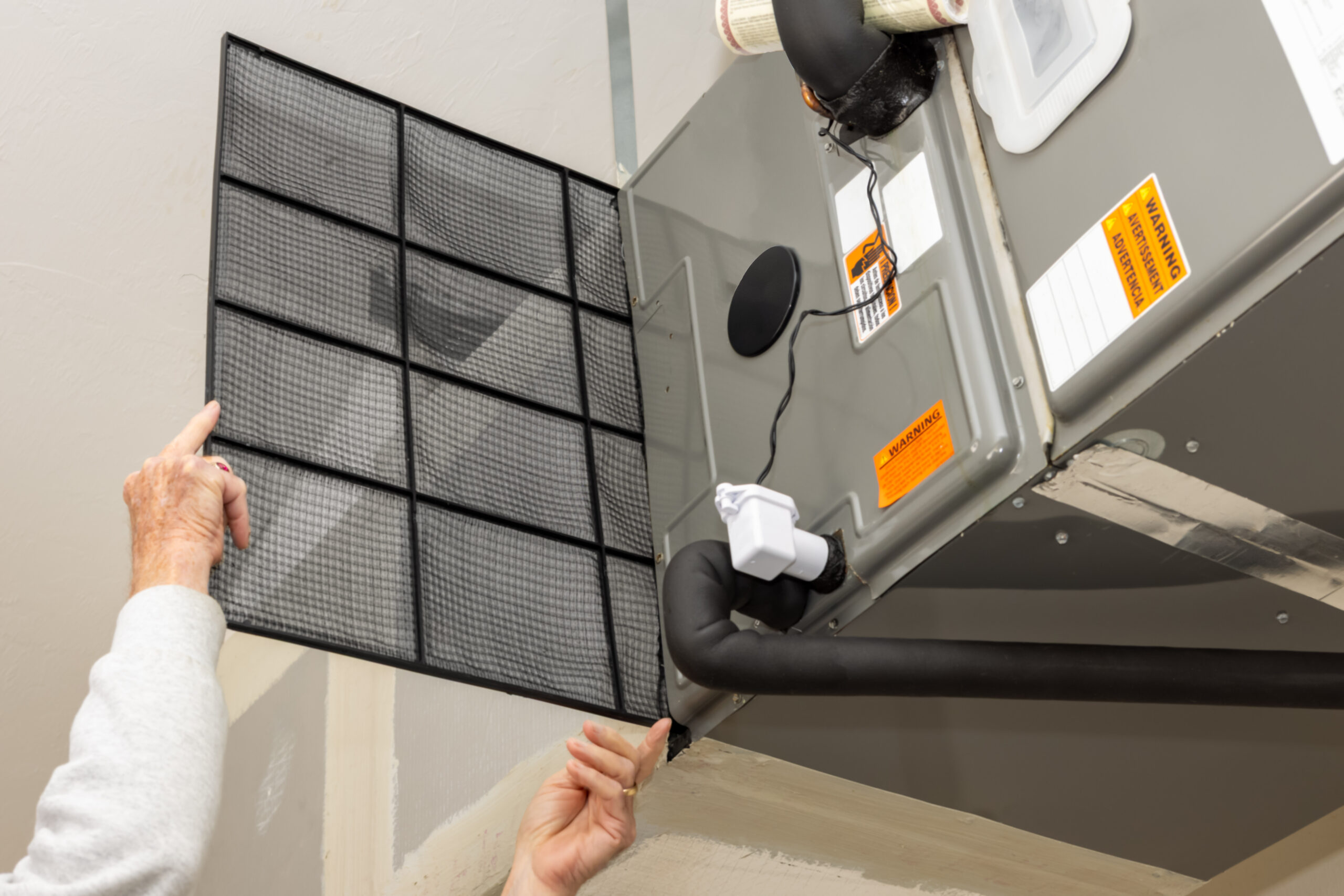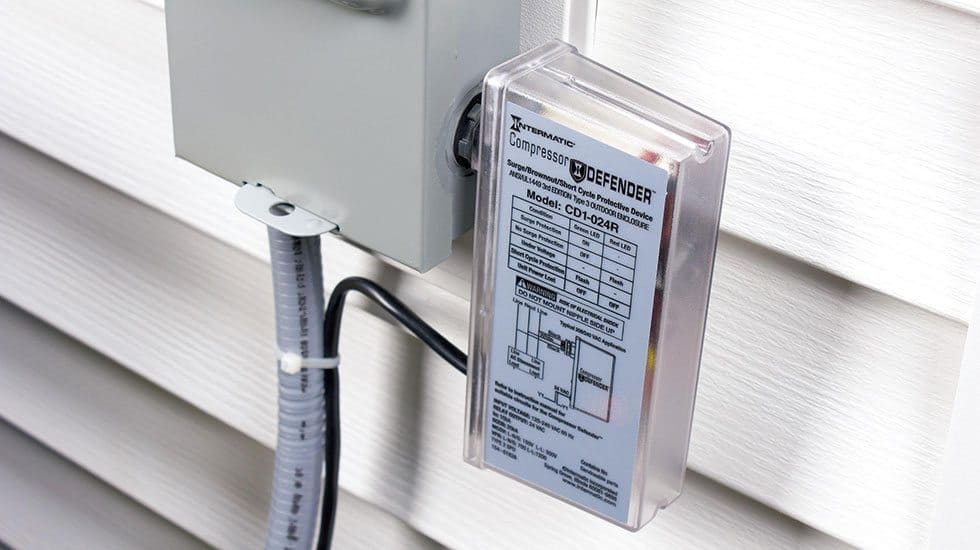|
Getting your Trinity Audio player ready...
|
Last Revised: 6/6/25
Have you ever taken a sip of tap water and wondered what’s actually in it? Or maybe you have a water filter that still makes you uneasy about whether it’s truly protecting you from harmful contaminants. If this sounds like you, don’t worry – you’re not alone.
Clean water isn’t a luxury, it’s a necessity. But with so many filtration options out there, choosing the right one can sometimes feel overwhelming. With over 75 years of experience helping homeowners find the best filtration system, we at Mattioni know what works. And two of the best available filtration systems are the Seagull IV filter and Reverse Osmosis (RO) systems.
Both filters will give you purified water, but they work in completely different ways to target different contaminants. Therefore, it’s crucial to conduct a water quality test before selecting any water filtration or conditioning systems.
“
You don’t just want water that looks clean – you need to know it’s safe, tastes great, and won’t leave you second-guessing every sip.
”
If you’ve already tested your water quality, this article will give you the information needed to choose between a Seagull IV and an RO filter. And if you haven’t, it’ll prepare you for which contaminants to look for when you do test your water. We’ll compare these two filtration systems across six key factors:
- Filtration Technology
- Speed & Convenience
- Water Waste & Efficiency
- Maintenance & Longevity
- Taste & Water Quality
- Installation & Space
After reading this, you’ll be ready to confidently choose the best system for your home – setting you up for cleaner, safer water. Let’s start with the most important aspect of any water filter: the filtration technology and contaminants addressed by each system.

The Seagull IV water filter is installed directly below your kitchen sink.
1. Filtration Technology: Which Contaminants are Removed?
Seagull IV Filtration Technology
It uses a proprietary “Structured Matrix” technology, which involves three layers of filtration: ultrafine microfiltration, chemical adsorption, and electrostatic attraction. Through this process, the Seagull IV filter captures bacteria, viruses, colloids, and organic chemicals like herbicides and pesticides. It also removes foul tastes and odors but does not remove heavy metals or dissolved solids. This means that it doesn’t strip out beneficial minerals, but it also doesn’t soften water.
Reverse Osmosis (RO) Filtration Technology
Uses a semi-permeable membrane to remove a broad range of contaminants (up to 99%) and yield pure water. If you have concerns about toxins in your water, RO can give you peace of mind – it removes lead, arsenic, fluoride, and some bacteria and viruses. This process also removes essential minerals, which can lead to water that tastes flat or empty if a remineralizer isn’t included.
Which Filtration Technology is Better?
There’s no clear winner in this category – it depends on the water quality challenges that your home is facing. If you need to remove bacteria and viruses and want mineral-rich water that retains health benefits and a natural taste, the Seagull IV is the better choice. If you need aggressive filtration for treating extreme contamination, Reverse Osmosis is the stronger option.
2. Speed & Convenience: Do You Have To Wait For Water?
Seagull IV Filtration Speed
It operates with instant filtration – just turn on the tap and enjoy clean water without waiting. The Seagull IV filters on demand, directly from the faucet.
Reverse Osmosis Filtration Speed
Reverse Osmosis requires water to pass through multiple filtration stages, which slows the process. Many RO systems need a storage tank because the filtration is too slow for real-time use. Once the storage tank is depleted, you’ll have to wait for the system to catch back up, which typically takes 2-4 hours to fill a standard 2.8-gallon tank.
Which is More Convenient?
The Seagull IV filter wins the speed and convenience category. It delivers pure water immediately without a delay, while Reverse Osmosis needs a storage tank as its process takes time to complete.
3. Water Waste & Efficiency: Who Wastes More?
Seagull IV Water Efficiency
It yields zero water waste – every drop that goes through the filter comes out clean. It’s an efficient, environmentally friendly, and completely contained system.
Reverse Osmosis Water Efficiency
RO wastes 3-4 gallons of water for every 1 gallon of purified water produced. This inefficiency can increase water bills and is not ideal for drought-prone areas.
Which is More Efficient?
The Seagull IV wins by a landslide. It creates no wastewater, meaning it’s a more sustainable and cost-effective option. If water conservation isn’t a concern, and you’re okay with waste, the RO system still provides great filtration.
4. Maintenance & Longevity: How Much Work Is Involved?
Seagull IV Maintenance Required
Seagull IV filters require a simple cartridge replacement roughly once per year for a family of four (the smallest Seagull IV filter is rated for 1,000 gallons). There’s no storage tank, no electrical parts, and very little maintenance is required.
Reverse Osmosis Maintenance Required
Reverse osmosis systems need multiple filters and a membrane that must be replaced regularly. The storage tank can also develop bacterial buildup and leaks, requiring periodic sanitizing and routine maintenance.
Which is Easier to Maintain?
The Seagull IV filter is the clear winner for those who prefer low-maintenance filtration. If you’re willing to invest some time in regular maintenance, then you shouldn’t rule out RO.
5. Taste & Water Quality: Does It Affect Flavor?
Seagull IV Water Taste
It retains beneficial minerals, leading to a natural, refreshing taste similar to high-quality spring water.
Reverse Osmosis Water Taste
RO removes nearly everything, which can result in flat, demineralized water. Many users install a remineralization filter to restore taste.
Which Produces Better Tasting Water?
If your reverse osmosis filter is paired with a remineralization filter, then there isn’t a clear winner for taste. If it’s not, then water produced by the RO system will be less flavorful and taste flat, meaning the Seagull IV filter wins this category.

6. Installation & Space: How Much Room Do You Need?
Seagull IV Installation Space Needed
Seagull IV filters are compact, with under-sink installation and no electricity or bulky tanks required. It’s a quick and simple setup with very few plumbing adjustments needed.
Reverse Osmosis Installation Space Needed
RO systems require more space for the filtration unit, storage tank, and possibly an additional remineralization filter. While not overly complex, a reverse osmosis system installation does require a few more steps than the Seagull IV.
Which Takes up Less Space?
If you have plenty of space under your sink and don’t mind a more complex setup, then both filters are in play. But if you have limited space or prefer a simple installation, the Seagull IV is the better choice.

Final Verdict: Which Water Filter System Should You Choose?
When choosing between a Seagull IV and a Reverse Osmosis system, factors like speed, waste, taste, installation, and maintenance all matter, but none of them are as important as whether the system removes the unique contaminants in your water. You don’t just want water that looks clean – you need to know it’s safe, tastes great, and won’t leave you second-guessing every sip.
Start with a Water Test
Before making a decision, it’s essential to test your water and see what’s in it. Depending on where you live and your water source, your tap water could have bacteria, viruses, heavy metals, chlorine, pesticides, or various other contaminants. Your water’s unique makeup will determine which filtration system is best for you. If your concern is bacteria and viruses, the Seagull IV is a great option. If you need to remove heavy metals, RO is your best bet.

Seagull IV vs. Reverse Osmosis: The Bottom Line
Water quality isn’t something to gamble with. Whatever challenges you’re facing, the right choice starts with getting an accurate profile of your water. Once you’ve completed a test, then you’re able to align your needs with the filtration system that works best for the contaminants you’re dealing with.
In many ways, the bells and whistles that come with a Seagull IV filter set it apart from Reverse Osmosis systems, but you should make sure that its filtering capabilities meet your needs. It’s always advisable to have a conversation with a professional plumber before installing a system. And at Mattioni, we’ve been helping homeowners get safe, clean water for over 75 years.
We’re here to guide you through the process, ensuring the right filtration system for your home is properly installed and set up for long-term performance. Ready to get started? Call us at (610) 400-8510 or book your professional water test appointment online. It’s time to take the first step towards cleaner, healthier water for you and your family.





